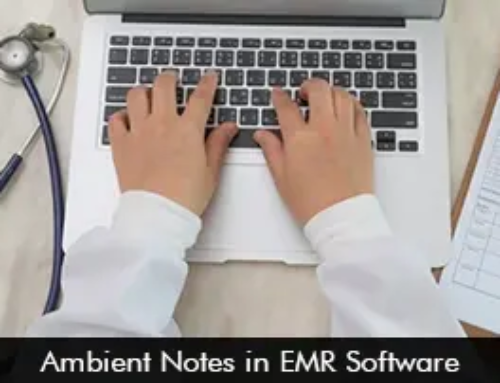For several years, the opioid misuse issue in the United States has been a major public health concern. Since the COVID-19 pandemic fatal drug overdoses have increased by 29% in the US. Healthcare organizations are actively using Electronic Medical Records (EMR) Software technology to combat the opioid crisis and improve patient safety greatly.
Substance Abuse EMR Software Features to Prevent Opioid Deaths
Specialized capabilities are included in Electronic Health Record (EHR) software created for addiction medicine clinics and drug rehab centers to meet the specific requirements of managing patients with substance misuse and opioid problems. The following are some essential characteristics of most substance abuse EMR software:
- Addiction-Specific Templates
- Clinical Decision Support Tools
- Patient Assessment and Screening Tools
- Treatment Planning
- Medication Management
- Group Therapy Management
- Telemedicine Software Integration
- Reporting Features
How can EHR Software Help with Opioid-Related Deaths?
Healthcare providers can avoid overdoses and related deaths by identifying and managing opioid prescriptions with the aid of Electronic Health Record software. EMR software can be used in the following ways to reduce opioid-related deaths:
Patient Risk Assessment Tools
Risk assessment tools are available in the EMR Software that can be used by therapists to assess patients for potential opioid misuse. Patients at high risk can be given timely treatment and consultations to prevent addiction.
Integrated CDS Tools
When Clinical Decision Support Tools are integrated into the electronic health records software system providers can make informed decisions at the point of care. The CDS features offer alerts for drug interactions and dosage thresholds that can make way for patient safety.
Opioid Registries and Tracking
Clinicians can create opioid registries inside the electronic medical records software to track and monitor opioid prescriptions. This will enable medical professionals to identify individuals who are in danger of overdosing or who are receiving repeated prescriptions.
The Role of Patient Engagement Tools in EMR Software in Patient Education Related to Opioid Usage
EHR software that incorporates patient interaction tools is a vital resource for teaching patients about responsible opioid use. Personalized instructional resources, including interactive modules, videos, and articles, are provided by these systems based on a patient’s medical history and prescription drugs.
They make it possible for patients and healthcare professionals to securely communicate, answering questions directly, providing clarification on opioid prescriptions, and having talks about possible risks and side effects.
Patient engagement solutions in the EMR Software system enable patients to actively participate in their treatment by facilitating shared decision-making, feedback gathering, and follow-up schedules, supporting informed choices, accountability, and safer opioid usage.








